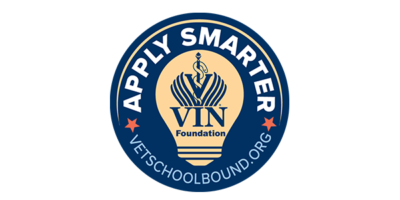Veterinary medicine is experiencing a student debt crisis. Yes, many higher education graduates experience loan repayment hardship; however the magnitude affecting recent veterinary graduates is unique. Every day I counsel pending and recent graduates through the Veterinary Information Network (VIN) and via VIN Foundation who report student debt balances in excess of $200,000, $300,000, $400,000, and $500,000 with incomes between $70,000 and $90,000 depending on where they choose to live and what type of veterinary medicine they are pursuing.
WHAT IS “APPLY SMARTER”?
No matter where you attend veterinary school or how much it will cost you to obtain your veterinary degree, you stand to earn the same range of income as your peers those first few years after graduation. A smarter way to approach application is to choose schools that will result in the least amount borrowed for your situation. You can use the VIN Foundation Cost of Education Map to help with your research. Don’t pay more than you have to for your veterinary education. In many cases, the least expensive school is also the easier one for you to get into — just look at the application statistics for each school you’re considering. Many state veterinary schools admit more than 30% of their in-state applicants each year. Non-resident applicants have about a 3-5% chance of getting in. If the schools you are considering do not publish those statistics, then ask your admissions counselor when you meet with her/him prior to applying.

Dr. Tony Bartels graduated in 2012 from the Colorado State University combined MBA/DVM program and is an employee of the Veterinary Information Network (VIN) and a VIN Foundation Board member. He and his wife have more than $400,000 in veterinary-school debt that they manage using federal income-driven repayment plans. By necessity (and now obsession), his professional activities include researching and speaking on veterinary-student debt, providing guidance to colleagues on loan-repayment strategies and contributing to VIN Foundation initiatives.


